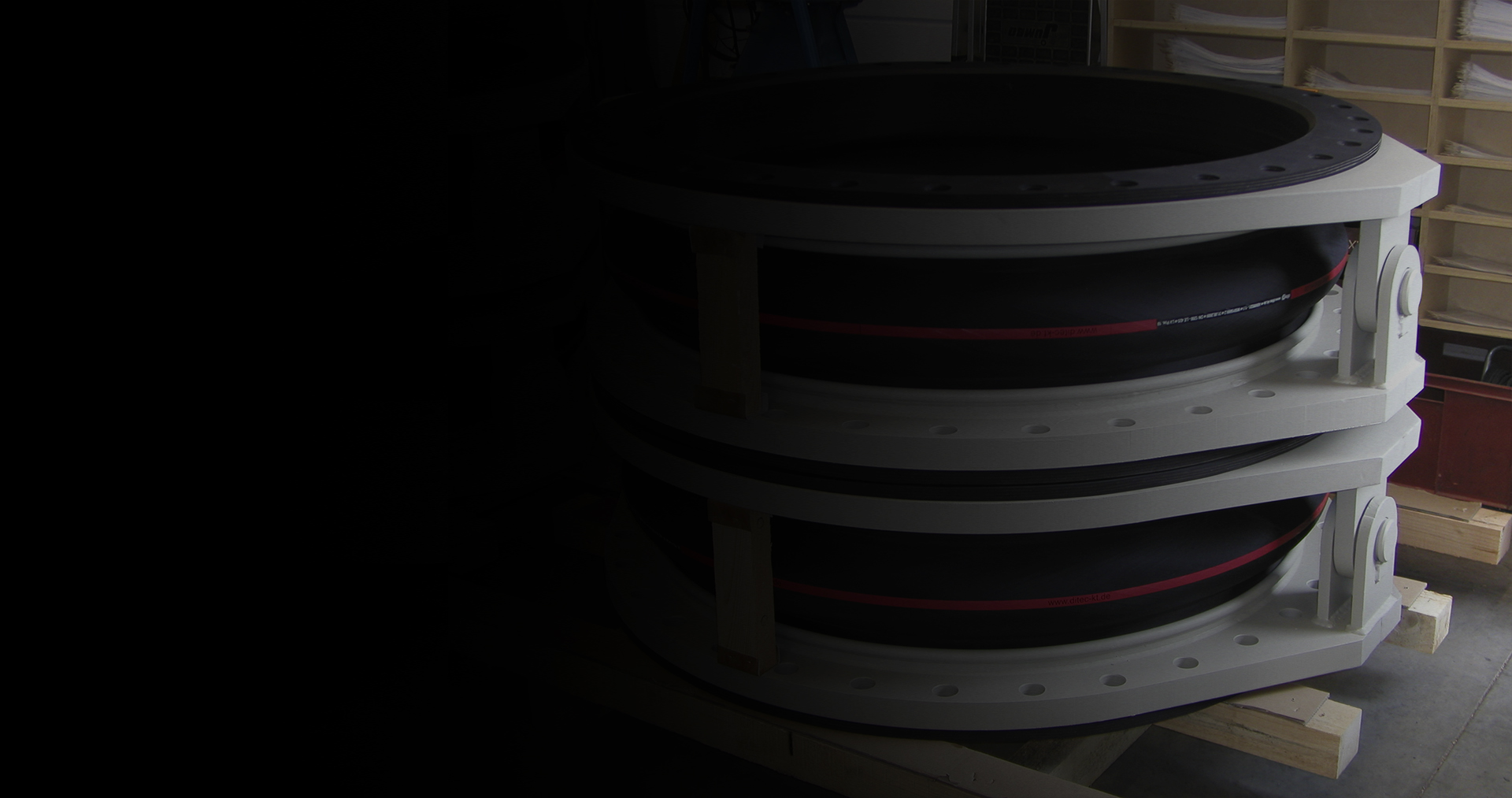Angular Expansion Joint
Hinged type rubber expansion joints are designed to permit angular rotation in one plane. The arrangement consists of a pair of hinge plates connected with pins and attached to the expansion joints backing flanges.
They can be used in sets of two or three to absorb lateral movement in one plane.
Gimbal type rubber expansion joints are designed to permit angular rotation in multiple planes. The arrangement consists of two pairs of hinge plates connected with pins to a common gimbal ring and attached to the expansion joints backing flanges. They can be used in sets of two, or sets of two with a single hinge type joint to absorb lateral movements in multiple planes. The installation gap for angular expansion joints needs to be strictly according to the specification because the tolerance of the pin fixing both hinge plates is limited.
Expansion joints expand in length when under pressure. The force created by this pressure is designated as pressure thrust. Where the pipe supports are not designed to absorb this force, hinge or gimbal assemblies must be incorporated from flange to flange so that the expansion joint is restrained in axial direction and can rotate in one or multiple planes only. Based on the Pressure Equipment Directive PED 2014/68/EU hinged and gimbal assemblies must be calculated to take the full pressure thrust with extra safety margins at the required hydraulic pressure test. Most commonly hinges and gimbals are directly integrated into the backing flanges which influences their construction thickness depending from the design pressure and dimensions. Frictional forces arise in the joint bearings and must be overcome in addition to the stiffness rates.
